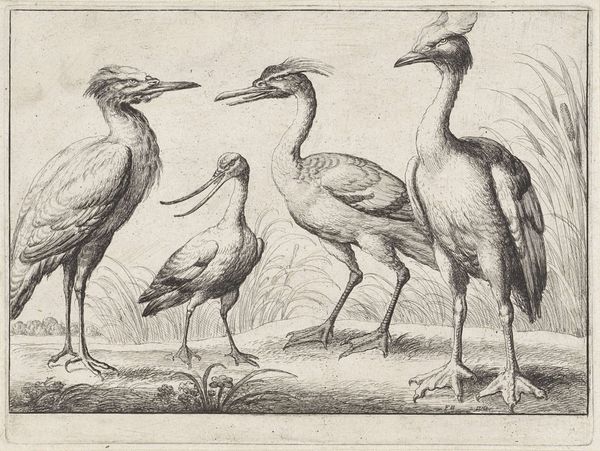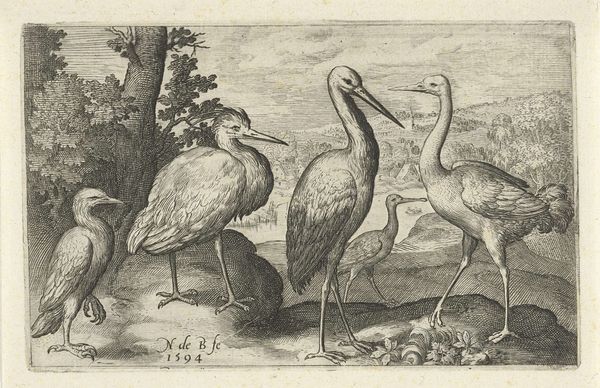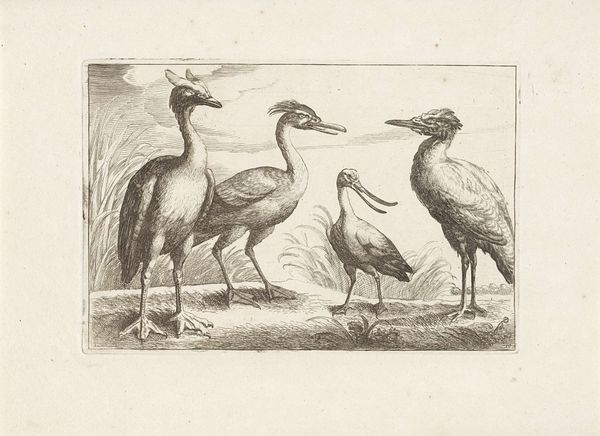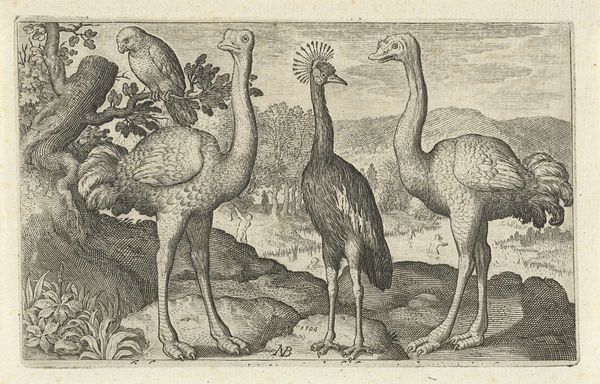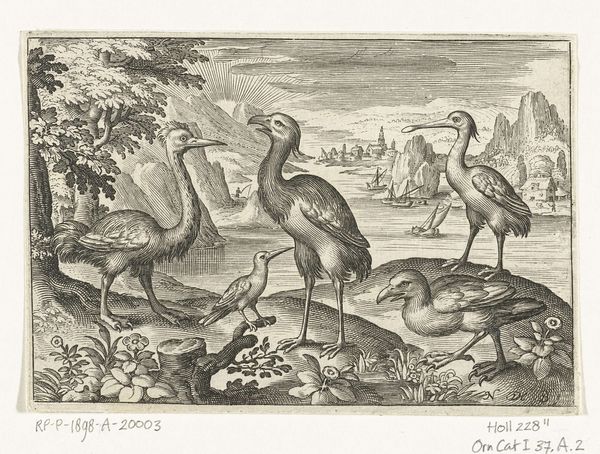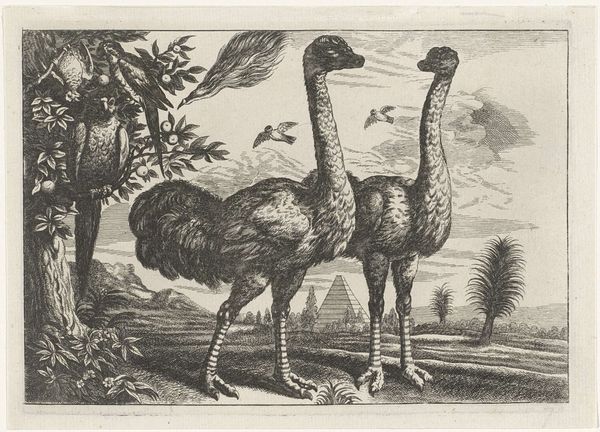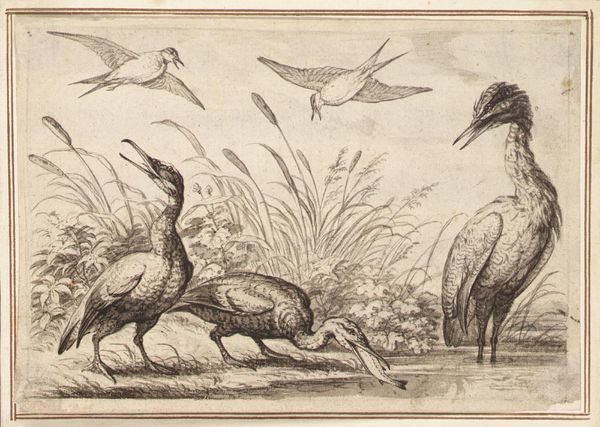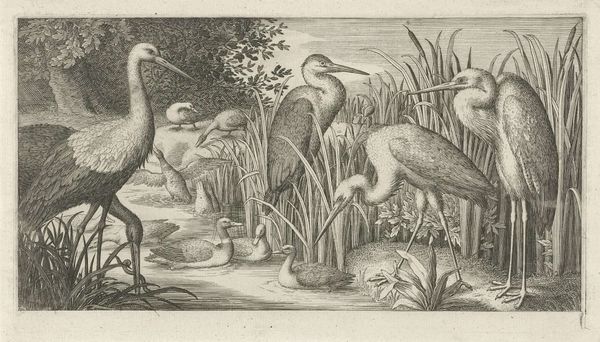
print, etching
#
baroque
#
dutch-golden-age
# print
#
etching
#
landscape
#
figuration
Dimensions: height 134 mm, width 186 mm
Copyright: Rijks Museum: Open Domain
Curator: Ah yes, Wenceslaus Hollar's "Watervogels," created in 1654. What strikes you about it? Editor: I find it quite fascinating. It's an etching, quite detailed, showing several water birds in a landscape. The one holding a fish seems so comical somehow. How do you interpret this work? Curator: For me, it's essential to consider the materials and techniques involved in Hollar's process. Etching allowed for relatively easy reproduction, and the prints could circulate widely. We must ask, who was Hollar producing these images *for*? The emerging merchant class in the Dutch Golden Age valued depictions of the natural world. Editor: So, it's less about artistic expression and more about a commodity made for a specific market? Curator: Precisely! The *means* of production dictated the kind of image created and for whom. Consider, too, how prints like these disseminated knowledge about different species and their habitats. Was it a tool for scientific observation or more about establishing a status symbol, pointing to global trade? Editor: I see your point. By considering the material conditions – the printmaking technique, the social context, and the target audience – we can gain a much deeper appreciation for the work. Curator: Indeed. And we also begin to challenge these assumptions by thinking about the labor involved in Hollar's etching, how materials were sourced and then circulated and consumed across different audiences. What do you think is gained or lost from that kind of approach? Editor: I guess it shows us how art is always intertwined with production, society, and even the labor force behind it. Thanks for sharing this perspective.
Comments
No comments
Be the first to comment and join the conversation on the ultimate creative platform.
